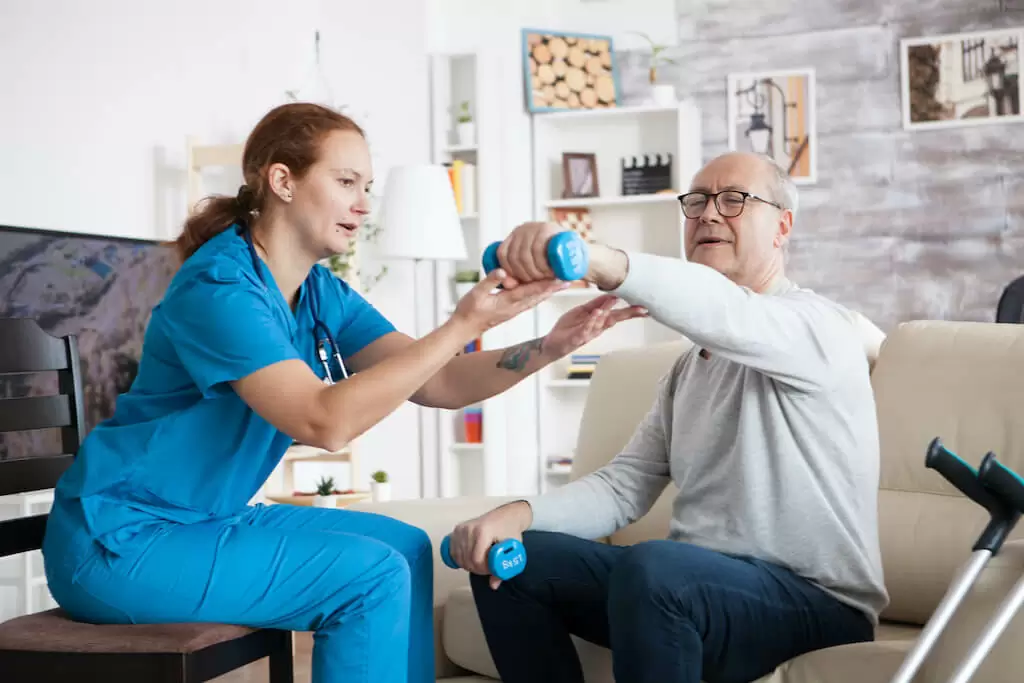With old age, your body may become increasingly weak. It may be difficult to walk and even go to the bathroom, let alone doing your own chores anymore. For this reason, your family members may check on you more often and try to help you with some chores. However, family members may be living far away, they may have work responsibilities or a child to take care of. In this case, it becomes increasingly difficult for a person to create time. In another case, you or a relative may have had an accident and have temporary or permanent difficulties in taking care of themselves. Even if a relative offers to help you, caring for a patient is not easy and may require some professional knowledge.There are some care centers for people who need care. But many people do not want to give up the comfort of their own homes. Both old age and the healing process involve similar stress. And in this process, being in an environment where the person feels comfortable is among the situations that improve the general health status. As a result of this situation, the necessity of home health care services has emerged.
Although home healthcare has been provided by the family or local community for many years, this service has also started to be provided by health professionals trained in patient care with the developing period. This service, which was quite expensive and accessible only to the rich at first, has changed over the years and has become a service that everyone can access.
Home health care means the care provided in their own homes to people who cannot carry out their own care for any reason, who have medical treatment that needs to be applied for a long time (such as IV drip administration, injection). Home healthcare can cover comprehensive care that includes health professionals such as a nurse, a physical therapist, and a language and speech therapist. In addition to medical care, it may also include patient caregivers within the scope of chores or social services who help with the personal care of the patient.
This service is often confused with home care service. Although both mean a home-based care service, in home health care, the person performing the care is a licensed health professional and is separated from the home care service in this aspect. For this reason, health care also covers diseases such as postoperative care or the treatment of chronic health conditions.
Home health care is a unique service not only because it is provided at home, but also because it is as comprehensive, curative and more convenient as the health care provided in any hospital or care center.
Who Receives Home Health Care?
There are many conditions covered by home health care, and it is not possible to mention them individually. Chronic diseases usually require regular monitoring and regular use of medications. Treatment of chronic diseases such as HIV/AIDS, and thyroid may require regular medication use, careful diet, and follow-up with a hospital appointment. In general, if you have any of the following conditions, you may want to consider taking advantage of home health care:
- In the presence of surgical wounds or pressure sores
- Intravenous injections or injections containing nutritional therapy
- Serious diseases such as cancer
- Chronic diseases such as diabetes, heart failure
- Newborns at risk
- Having an unstable health condition that requires follow-up
- The postoperative healing process
What is Included in the Home Health Care?
Home health care refers to the care provided by licensed medical personnel in a person’s own home. The general purpose of the service is to improve their health by providing the necessary care to people who are injured or have an illness. Thanks to the service provided, you can recover, regain your former independence, extend your life span, and maintain your current condition. In addition to health, that also provides an opportunity for patients to be independent. In this context, you can expect the following in home health care:
- Personal care: Taking a bath, going to the bathroom and eating are among the daily activities that a healthy person can do alone without difficulty under normal conditions. However, it may be difficult to perform even these activities in illness or old age. In this case, the person who cares for you will help you provide your personal care.
- Monitoring of vital signs: Criteria such as blood pressure, respiratory rate, body temperature give information about people’s vital activities. It is necessary to ensure regular follow-up in case of a serious illness, after surgery or in elderly people.
- Medical treatment: People who benefit from home health care often have medications that they need to consume regularly. These medications might be taken orally, as well as intravenous administration may be required. In addition, some patients may not be able to be fed orally. In this case, a patient might be fed by various ways such as nasogastric, gastrostomy, or intravenous. In these and similar cases, a medical staff trained on the subject will support you in the implementation of the treatment planned by the doctor.
- Chores and garden work: It is not enough just to receive good medical care for the improvement of health. The cleanliness of the environment you are in, your healthy and balanced diet are also effective in this process. For this reason, a care personnel who will support you in maintaining your social life such as cleaning, cooking, washing the laundry, or gardening, and paying bills may be included among the person or persons who will provide care within the scope of home health care.
- Social life: The definition of health is defined by the World Organization as a state of well-being both physically and mentally. It may not be enough to implement your medical treatment properly and well at home. Mental health is also very important during the stressful recovery process. It may be good for you to spend time with family members and friends during this process. However, in some cases, there may not be someone constantly next to the patient. The formation of a bond of trust with the person providing your care during this process may make the patient feel that their need for sociability has been met.
Where to Apply for Home Health Care?
There are several ways to apply for home health care. The first step is always for the doctor to evaluate the situation. After listening to your various examinations and medical history, your doctor prepares a home health care plan. You can apply to an insurance company with a doctor’s prescription or get detailed information by contacting the institutions that provide home health services. Whichever way you prefer, make sure that you have detailed information about what the service covers, how the quality is provided, and the fee and payment plans of the fee. Before applying for a home health care service, you can check whether it meets the eligibility criteria for services.
How Much Does Home Health Care Service Cost?
There are many situations in which home health care service is applied. You may have difficulty continuing your life on your own, or you may need support for your treatment. In this case, you can receive home health care services from an institution. There are various scopes of the service you receive. For example, in some cases, it is enough to visit your home every few days, while in some cases, the care provider may need to stay overnight. In some cases, it is sufficient to check your medical treatment, while sometimes you can request a service that includes personal care. Given all these changes, the scope of care you want or the person providing the service (such as a nurse, or a patient caregiver) may cause differences in the fee for the service. For this reason, you can get information about your insurance coverage and details about the fee and payment plan by contacting an institution that provides the service for more accurate information about home health care.











